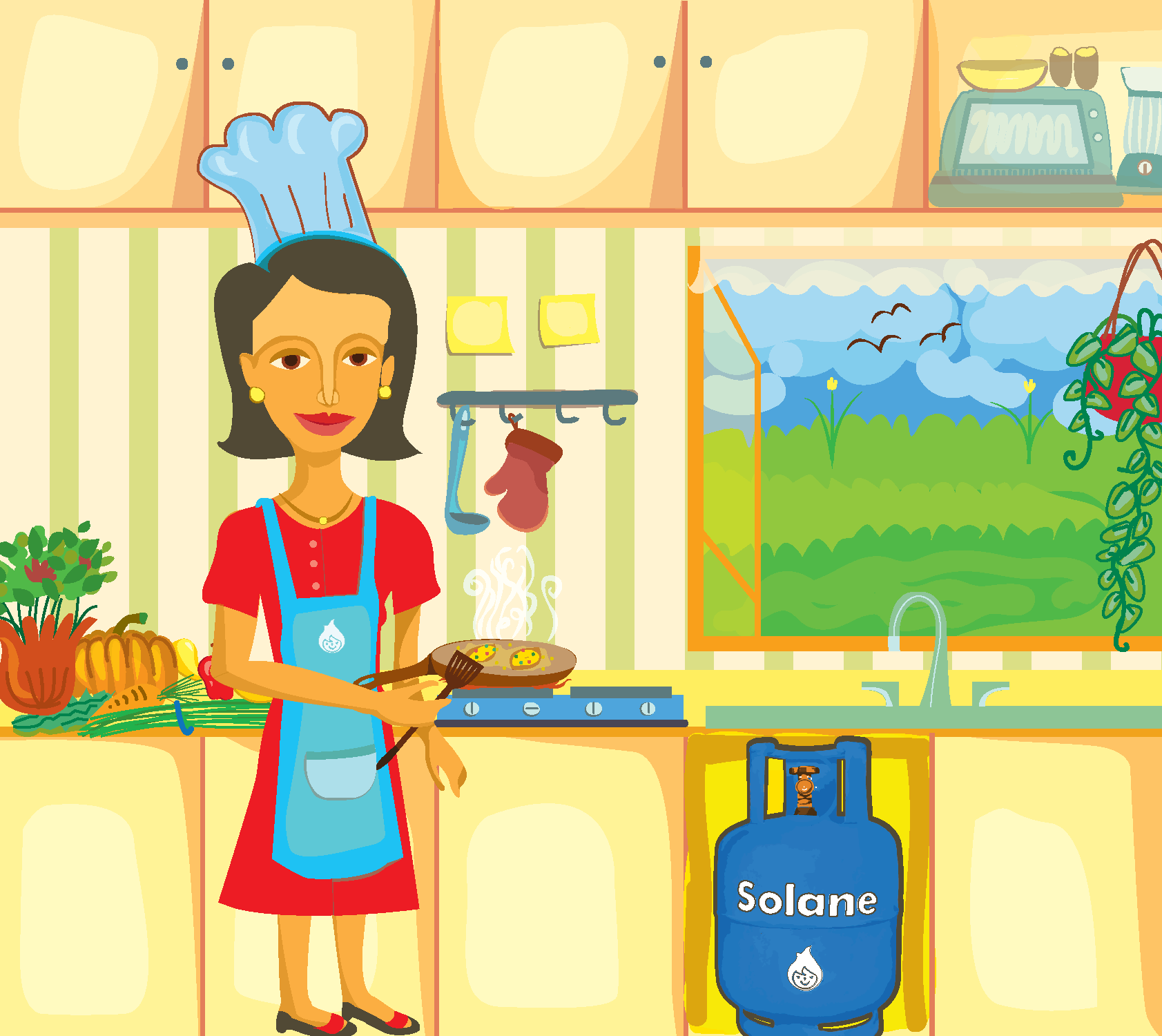As everyone continues to stay at home, people have been spending a lot of their time in the kitchen lately – from preparing daily meals and trying out new recipes, to cooking with the kids and of course, enjoying homecooked meals with the entire family. With this, kitchen safety is more important than ever, and it starts with securing all the tools and equipment, including making sure your LPG cylinders are safe and professionally installed.
Solane, a leading LPG provider in the country, offers these safety tips on the use of LPG to make cooking at home a safe and enjoyable experience.

Place the LPG cylinder in a well-ventilated area. When choosing a spot for your LPG cylinder, make sure that there is an opening, such as a window or a door, to ensure adequate ventilation. Make sure that LPG cylinders are also far away from other heat sources, electric outlets, and hazard-prone areas in the house to avoid ignition. Lastly, make sure that your LPG cylinder is in a secure and upright position.
Inspect the LPG cylinder. Upon delivery, carefully inspect your LPG tank to make sure that it is in good physical condition. First, check the cylinder for dents, cracks, corrosions, or other damages. Then, make sure that the safety cap and security seal are in place. If there seems to be a problem with any of the components, turn off the gas supply and have it replaced or repaired immediately. To make it easier, Solane offers customers a free 7-Point Safety Check. Through this extra precautionary step, Solane’s well-trained riders help ensure that the tanks are safe and secure.
Use correct equipment and accessories. With LPG cylinders, ensure that you are using the correct hose by checking for the mark, “LPG Hose.” Branded regulators, such as RECA and TPA, are recommended because these are manufactured according to specific standards. When attaching the regulator, ensure that it is securely connected to the cylinder valve. The regulator knob should also be open to allow the outflow of gas from the holes. It’s also important to regularly check the condition of these two and replace them as needed. The hose should be replaced every 2 years while the regulator should be replaced every 5 years upon the date of manufacture.
Practice caution. Whether you are installing, using, or disconnecting your LPG cylinders, caution is a must. To avoid mishaps and injuries, you should also never attempt to fix, refill, or replace your cylinders without the help of authorized personnel. Don’t forget to turn off the cylinder valve or regulator and gas appliance when not in use. Follow the manufacturer’s instructions regarding the use and maintenance of your gas appliance. In case of an emergency, try to eliminate all sources of sources of ignition and turn off the gas supply of the cylinder. If the leak is on the cylinder, cover the leaking portion with a wet rag.
Make sure your LPG is authentic. To help ensure the safety of your family, buy your LPG cylinders from authorized dealers only. In addition, when buying gas tanks, be sure to check for quality markings on the cylinders, such as the registered brand name and trademark of the manufacturer, standard used and test dates, the serial or code number, expiry date, tare weight and LPG content, and the “Made in the Philippines” mark.
For more information, visit https://www.solane.com.ph or follow @solane.ph on Facebook. To order Solane LPG, call 8887-5555 (Metro Manila) or text (0918) 887-5555 (nationwide).


